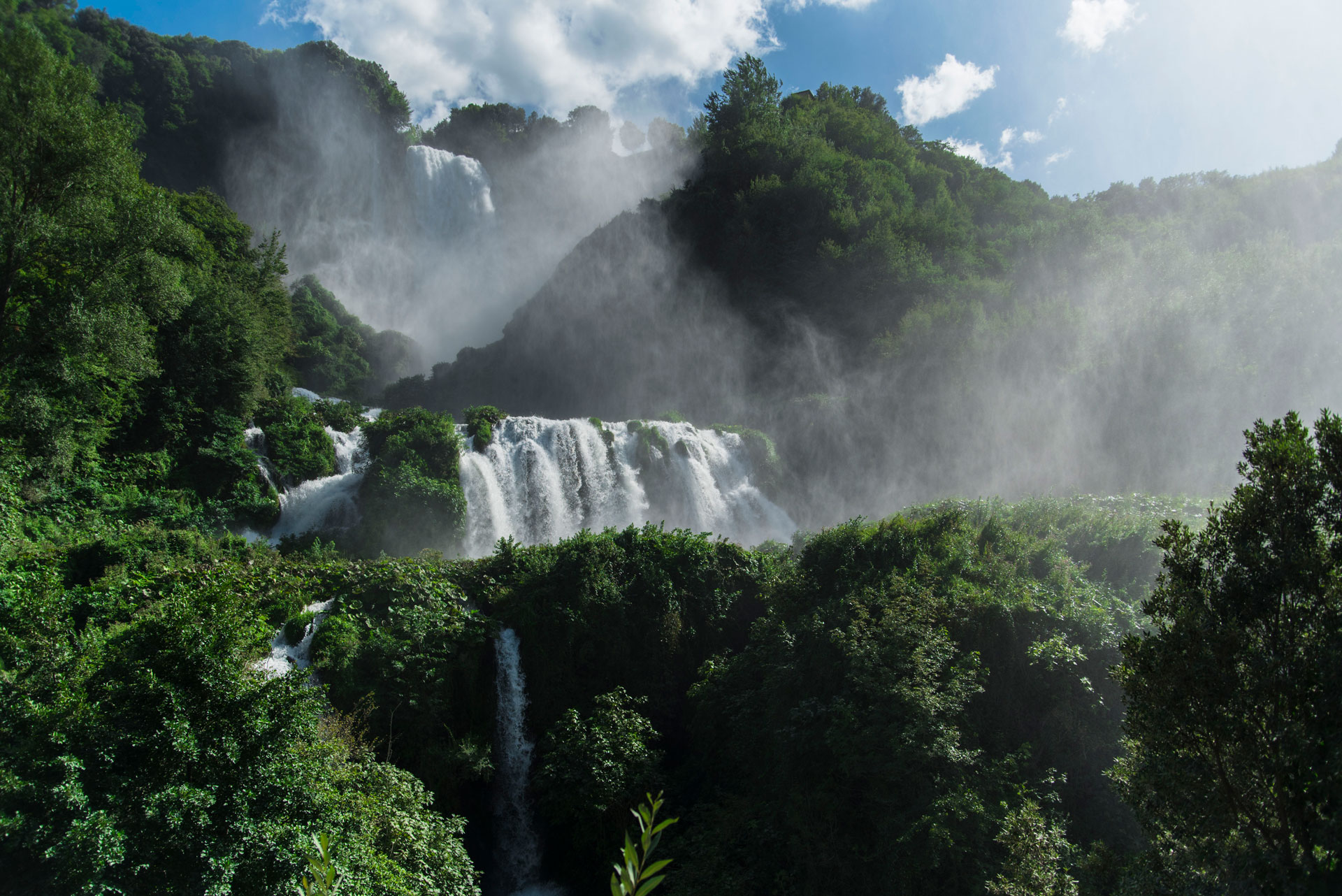While it is true that Umbria has no coastline, for anyone who loves water, this region offers a broad choice of places to enjoy, lakes, rivers, waterfalls in Umbria, marvels to visit and scenery to admire.
This itinerary brings together the main sites: each deserves a visit of at least one full day but if you only have a weekend for your trip, you can manage it all even in two or three days.
Trasimeno Lake
Trasimeno lake is the largest in central Italy and the fourth largest in the country in terms of surface area. It is particularly interesting for the great and rich variety of plant and animal species that it hosts and is famous for some fine local products, in particular the Trasimeno bean and eel served in a typical stew.
This body of water is surrounded by big and small quaint and thriving towns. Castiglione del Lago, Passignano sul Trasimeno, Magione, San Feliciano – home to an interesting Fishing Museum (Museo della Pesca) – and Monte del Lago are definitely worth visiting.
There are three islands that distinguish Trasimeno Lake, namely Polvese, Maggiore and Minore: they can easily be visited with a pleasant boat ride, although visitors are only allowed on the first two.
Corbara Lake
This lake occupies an enchanting valley inside the protected natural area of the Tiber River Park and is known for the Gole del Forello (Forello Canyon), beautiful canyons carved by the Tiber that direct the river water over flat curves to the artificial basin. Here too flora and fauna are particularly rich and diverse: especially herons, deer, mouflons.
The jagged lakeside is home to beautiful and thriving olive groves and vineyards that feature amazing caves, in particular the Grotta Bella and Grotte della Piana, often the destinations of speleological visits.
Alviano Oasis
The Naturalistic Oasis of Alviano Lake is a short distance from Corbara Lake to which it is linked both physically and historically. Alviano Lake is in fact an artificial lake created in 1963 thanks to a dam built on the Tiber river with the purpose of controlling the water of Corbara Lake and using it to produce hydroelectric energy. Within a few years Alviano turned increasingly into marshland, attracting a great number of birds including rare and particular species: accordingly, since 1990, this area has been declared as a protected naturalistic oasis.
Managed by the WWF, it is characterised by the presence of very diverse natural environments: marshes, ponds, swamps, water meadows and mossy forests. Its surface area of 900 hectares hosts birds such as the little-bittern, the great white heron, the black-winged stilt, and the osprey. Other animal species living in the oasis include catfish and carp, the Italian crested newt and the agile frog.
The activities one can enjoy here include bird watching and nature photography, as well as instructional activities and events held in this corner of Umbria.
Marmore Waterfalls
The Marmore Waterfalls, with its overall height of 165 metres, is among the highest in Europe.
It is three-tiered, and along with the particular and precious naturalistic context it is set in, it offers an impressive and enchanting show.
The falls are in the large Nera River Park which can be visited along various routes and paths, including guided visits, both standard and theme-based. It was created in 271 a.C. and is an example of Roman engineering used as a solution to the problem of frequent flooding due to the overflow of the Velino.
It is distinguished by the presence of holes and caves and rich fauna – aquatic, but not only – and also by particularly varied and precious flora.
Piediluco Lake
The same water of the Velino River, before the falls at Marmore, finishing in the Nera river, are enriched, through an emissary, with the water of the Piediluco Lake. Piediluco is the largest lake in the region, second to Trasimeno, and is in the southernmost area of Umbria, bordering with Lazio. The basin is characterised by its irregular shape, with a perimeter of approximately 13 kilometres.
The lake is at an altitude of 375 metres, with a maximum depth of approximately 20 metres. It is believed that along with the small lakes of the Rieti Plain, they form the ancient Lacus Velinus and it has even been thought that during the period of its greatest extension, the Velino lake occupied almost the entire plain, reaching the edge of the Marmore falls.
The small medieval hamlet of Piediluco offers a very interesting visit. The area features enchanting scenery thanks to the visit of the lake which is also a destination for people who enjoy sailing, canoeing and water skiing.
Fonti del Clitunno – Clitunno Sources
If you still have a few hours to visit Umbria, this itinerary of its bodies of water could only conclude with a visit to Fonti del Clitunno. These represent the source of the Clitunno river and are generated by cracks in the rocks, some of which are visible on the bed of the small lake that they feed. This body of water is characterised by extraordinarily clear water with emerald hues. Surrounded by very rich vegetation dominated in particular by willows, poplars and moss, and inhabited by swans and aquatic birds, this site offers a truly unique atmosphere, so much so that it inspired poets such as Propertius, Pliny, Virgil, Byron and Carducci.











Follow us on the socials